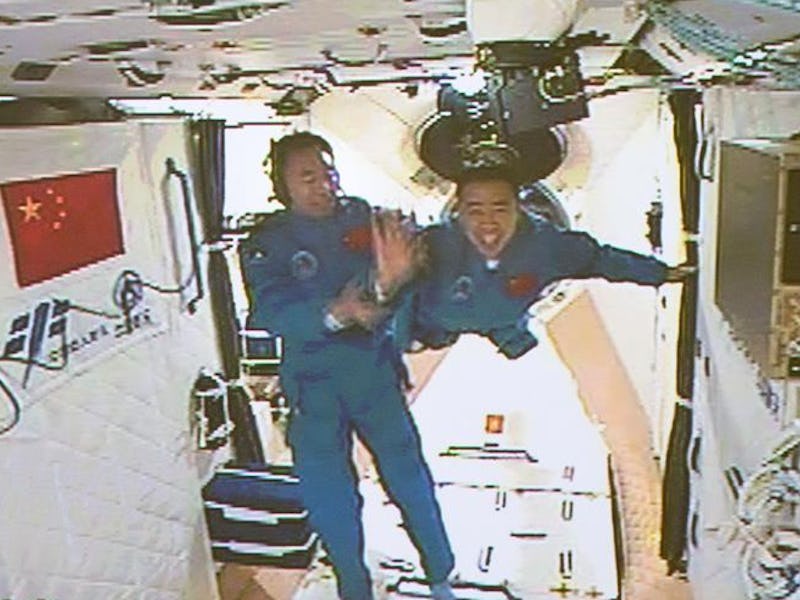For many in the international space community, this week has been extremely stressful, but for a select few, it has been a dream come true. Two Chinese astronauts, Chen Dong and Jing Haipeng, docked safely with the Tiangong-2 space lab on Tuesday, beginning a month-long stay in Earth’s orbit.
The astronauts began their journey Monday morning with a picture perfect launch, lifting off at sunrise from the Jiuquan Satellite Launch Center in the Gobi desert. The Shenzhou-11 spacecraft then spent two days in orbit before linking up with the space lab.
Shenzhou’s docking procedure is autonomous, relying on a myriad of sensors to help steer the craft into the proper position. As scheduled, the capsule successfully locked in place around 3:24 p.m. Eastern. A few hours later, after the vehicles were properly pressurized, the crew hatches opened.
Following tradition, commander Jing was the first to enter the Tiangong-2 at 6:32 p.m. Eastern, waving to Earth from inside the Tiangong-2.
This marks the sixth crewed mission for China, 13 years after their first astronaut — Yang Liwei — blasted off into space in 2003. It’s also China’s longest mission yet, as the duo will spend a total of 33 days in space (18 days more than the previous record).
In order to support the extended time in space, Shenzhou-11 only carried two astronauts (previous missions ferried three). Jing and Chen are the first two inhabitants of the recently launched Tiangong-2 space module, although it’s purportedly designed to house up to three astronauts at once.
Commander Jing, a 49-year-old Chinese fighter pilot, flew two previous missions in 2008 and 2012. To date, he has logged a total of 15 days in space, and by the time he comes home, he will be China’s most experienced astronaut. He will celebrate his 50th birthday during the mission with greenhorn crewmate, Chen Dong — a 37-year-old Chinese air force pilot.
The astronauts have already began work on a slew of different scientific investigations — including three student experiments involving silk worms — and are testing technologies and procedures needed for future long-duration missions. China has plans to set up a fully-functioning space station by 2022.
Medical researchers on the ground will closely monitor the crew’s vital signs to see how the men respond to the effects of microgravity. Just like astronauts on the International Space Station have a daily workout regime, the Tiangong-2 was outfitted with special exercise equipment — including a bike and treadmill — to help mitigate the damaging effects of microgravity.
China’s state-run CCTV News is broadcasting all aspects of the mission, everything from the launch, to the ingress, and more. The crew is also chronicling the mission through a series of diary entires, the first of which was published Wednesday. Jing compared Tiangong-2, favorably, to the predecessor space lab, writing: “Tiangong-1 was quite well, but Tiangong-2 is much more comfortable. It is perfect in layout, decoration, and matching of colors.”
